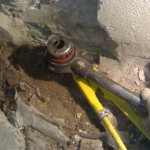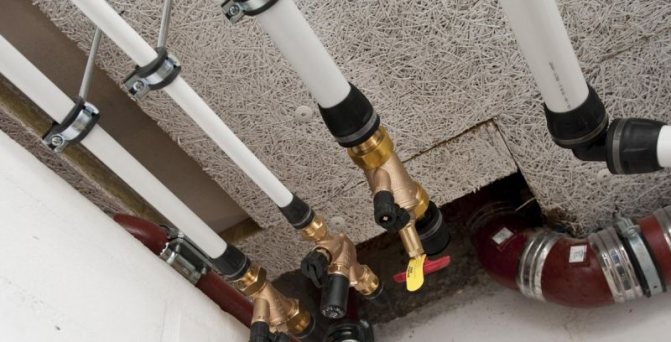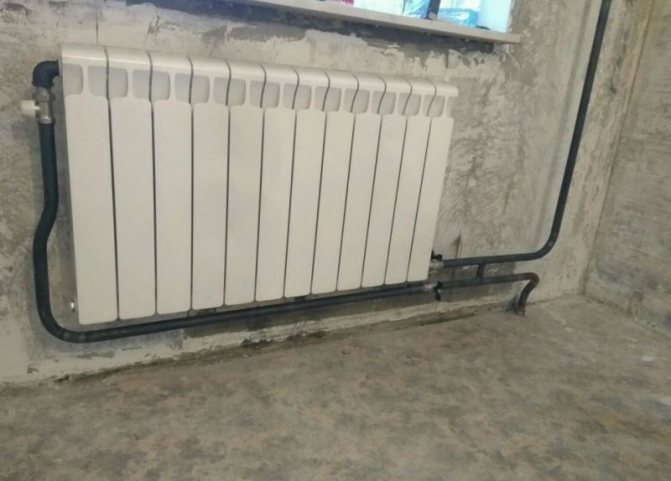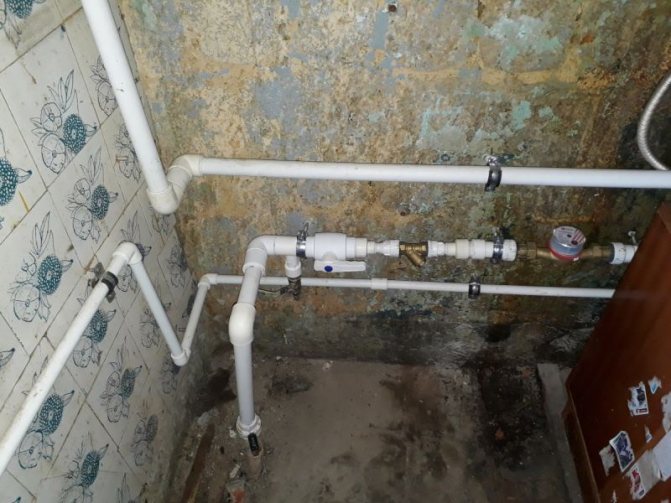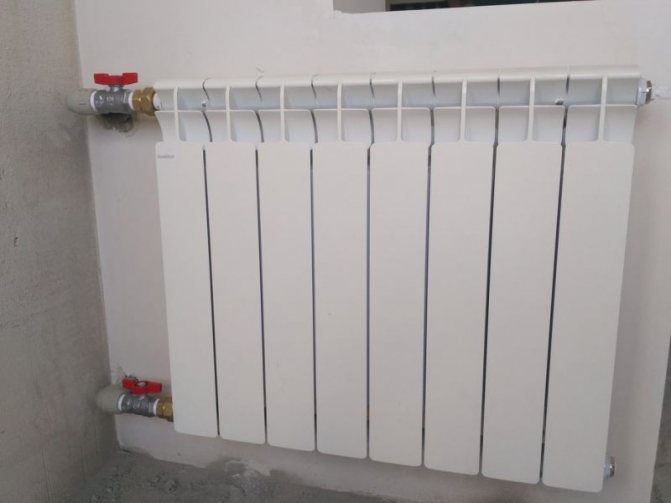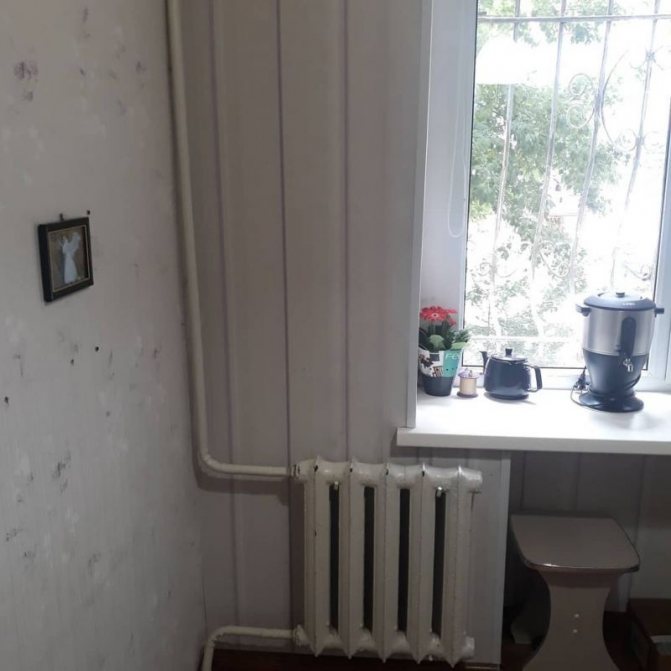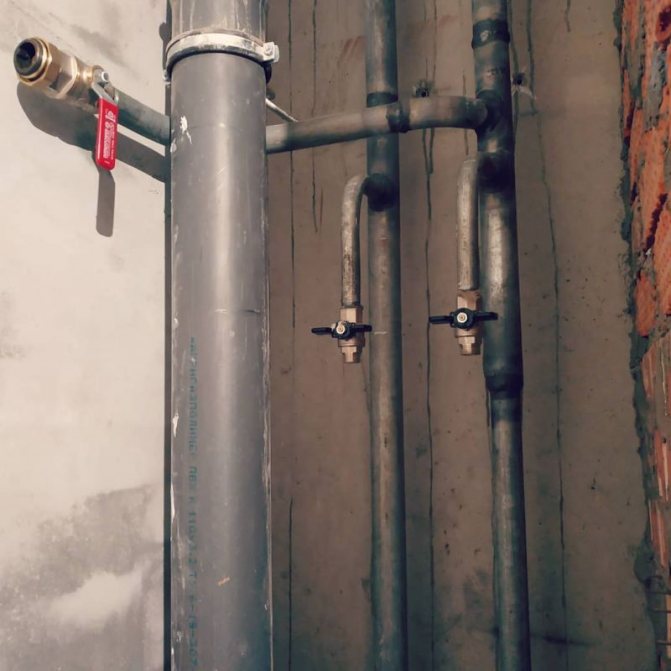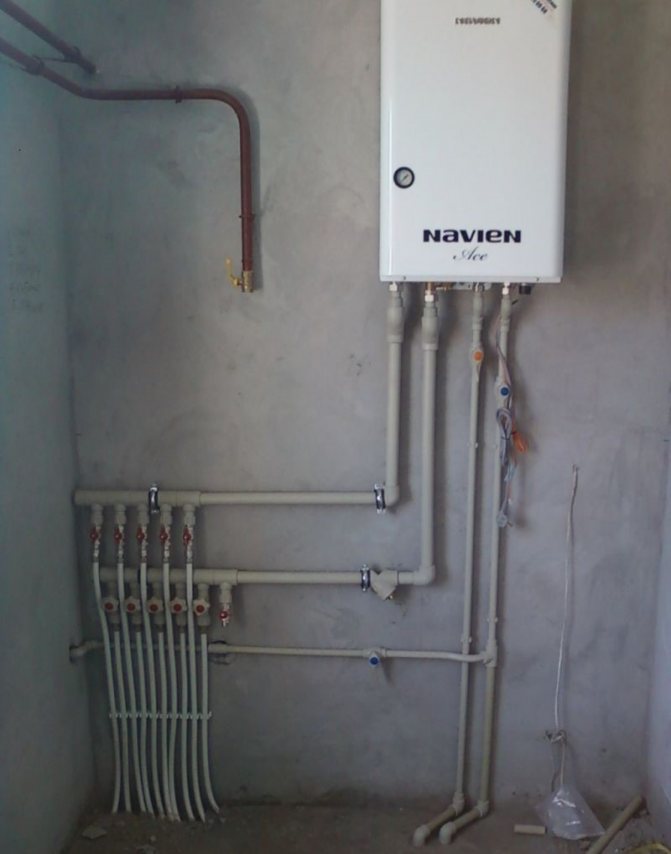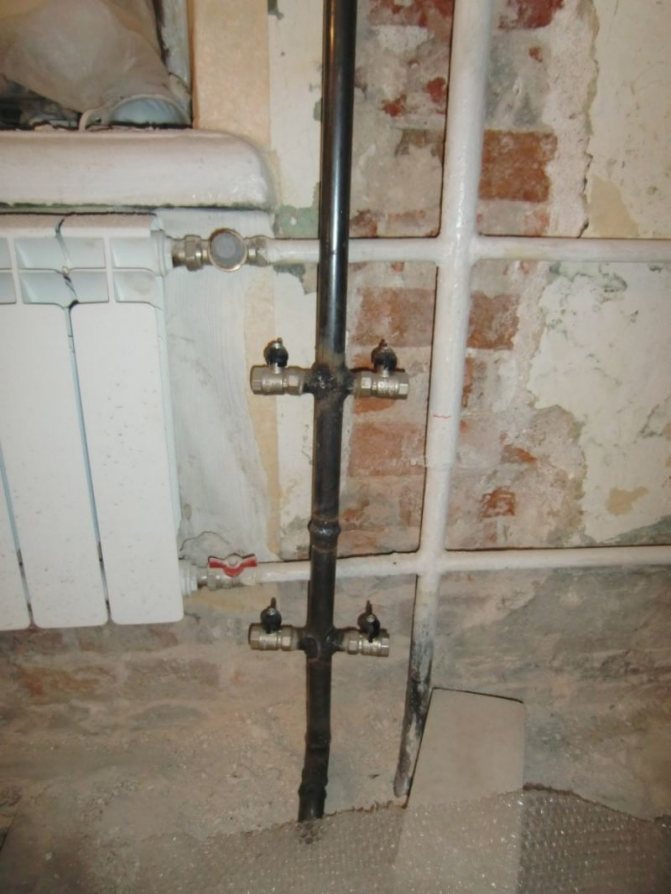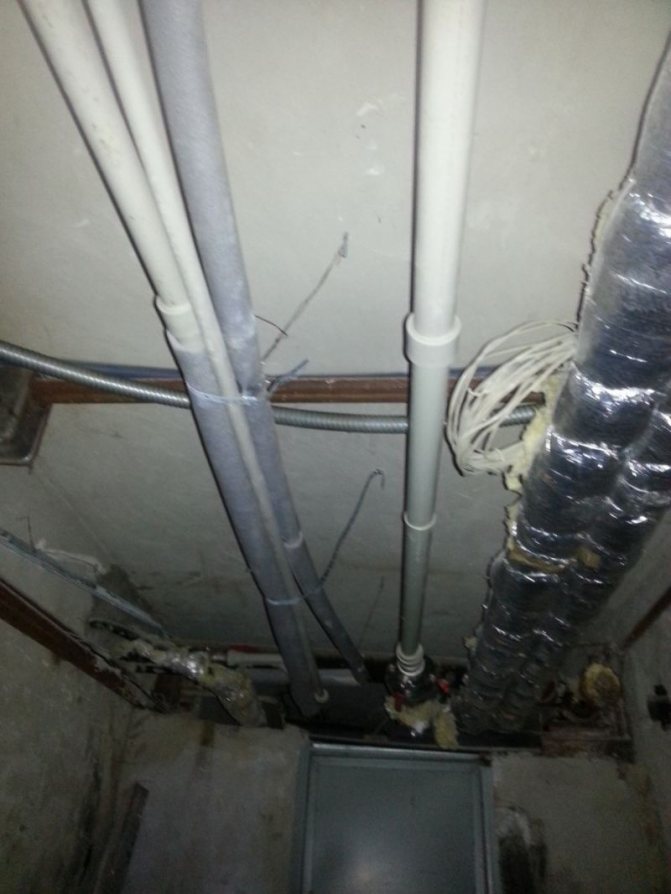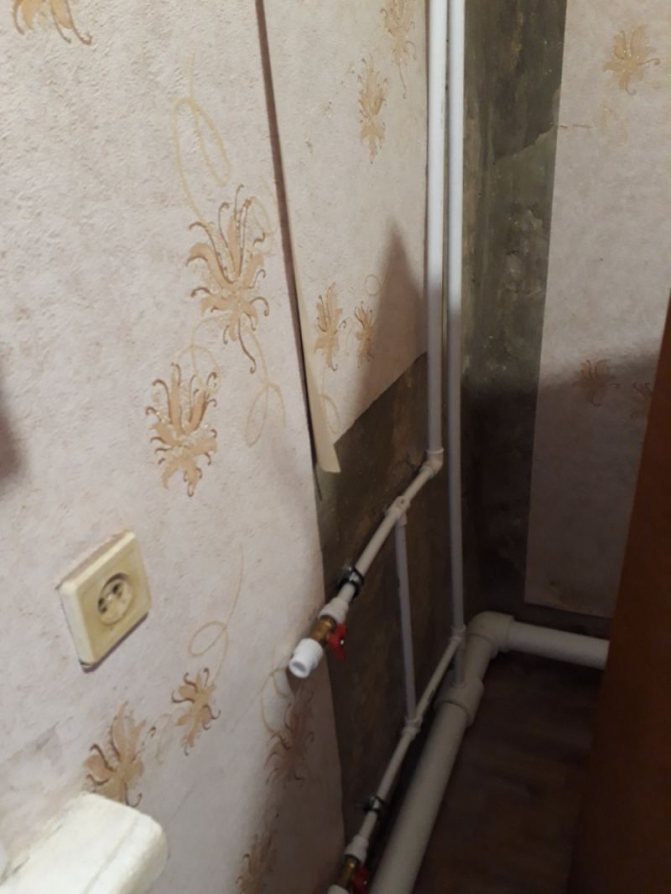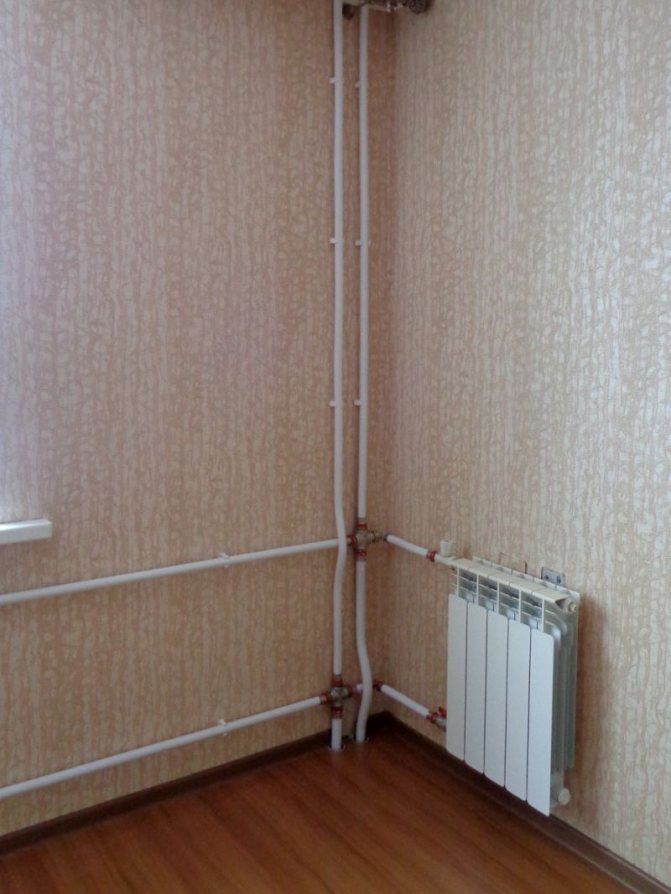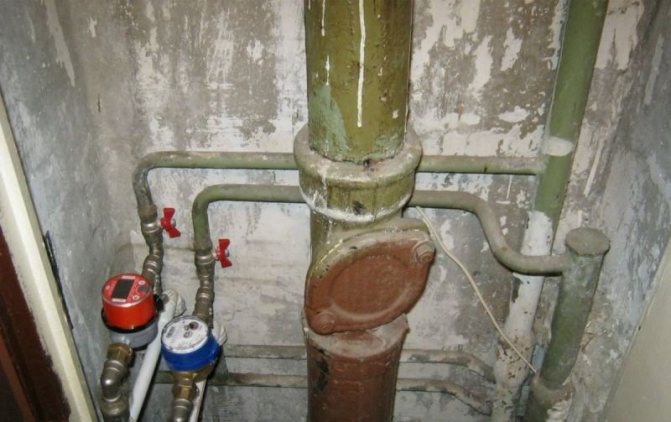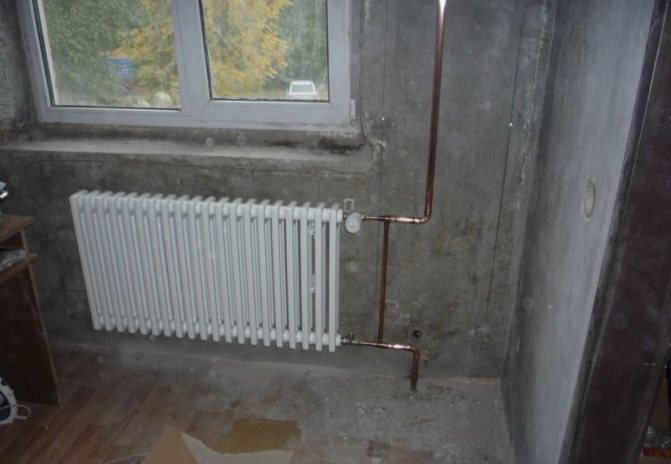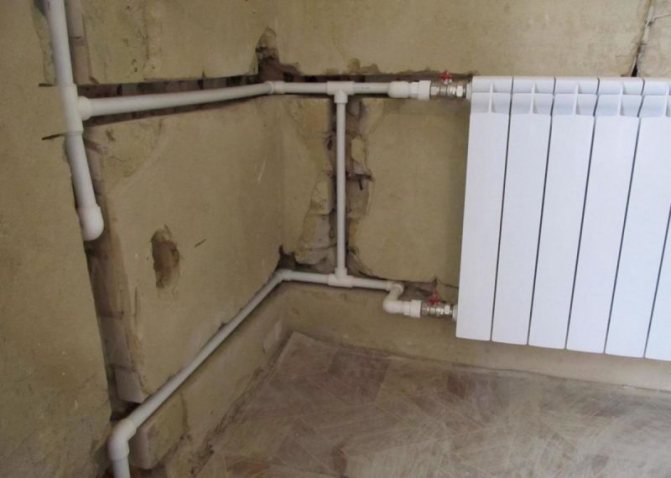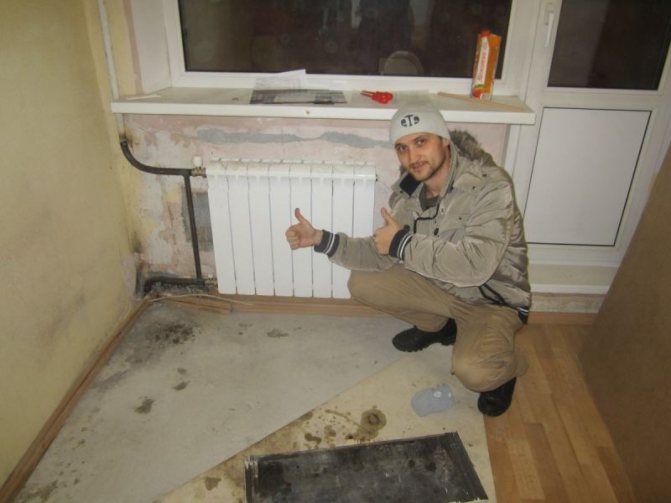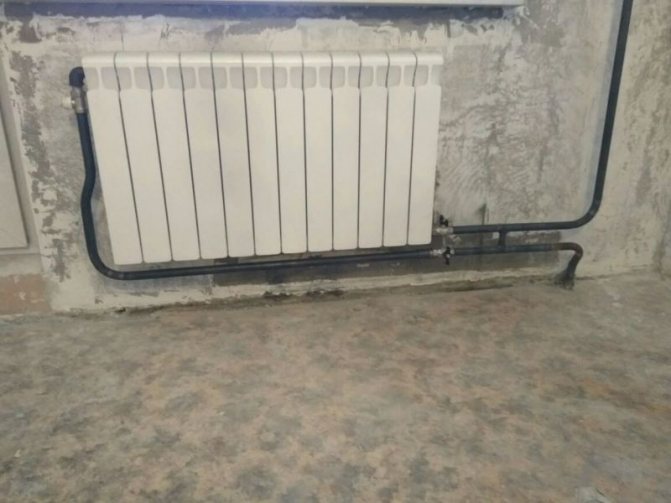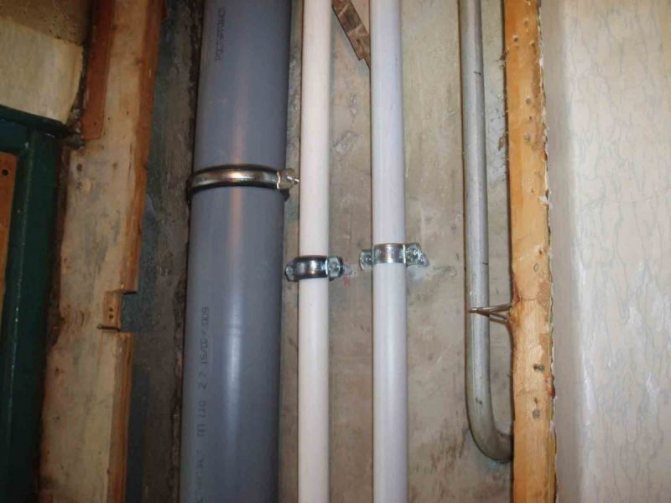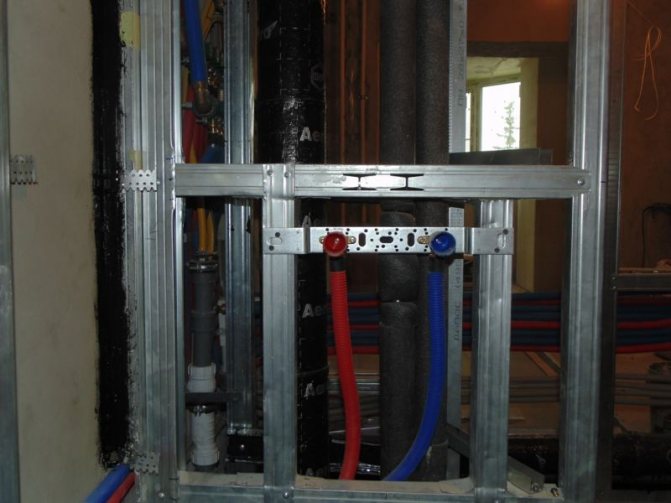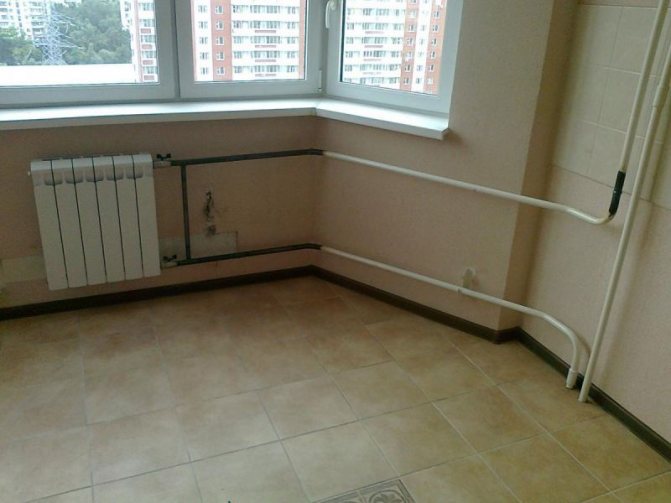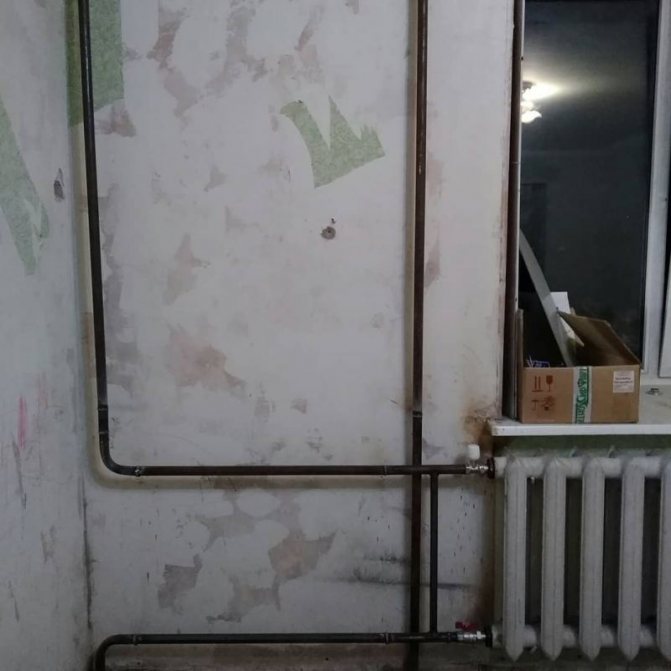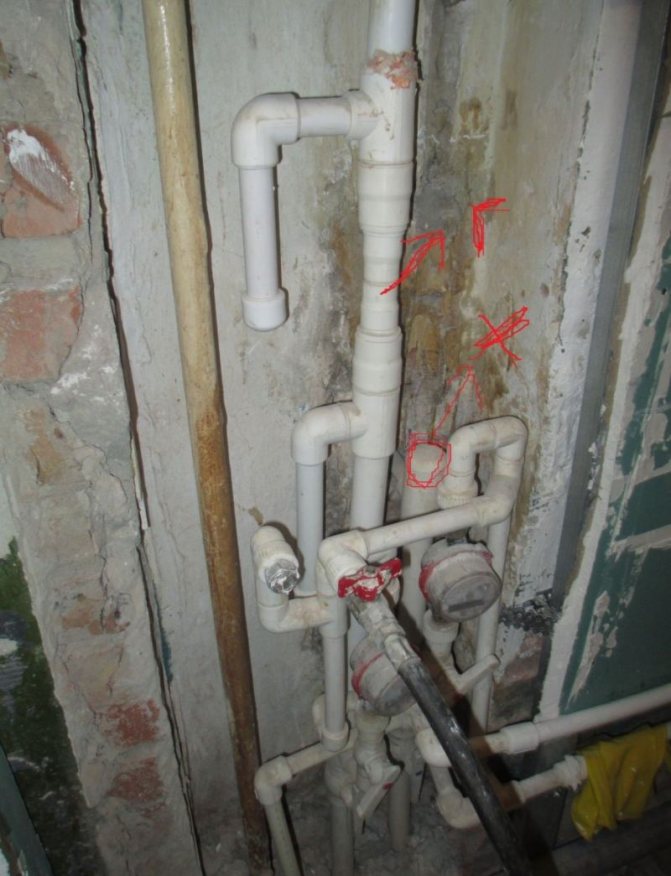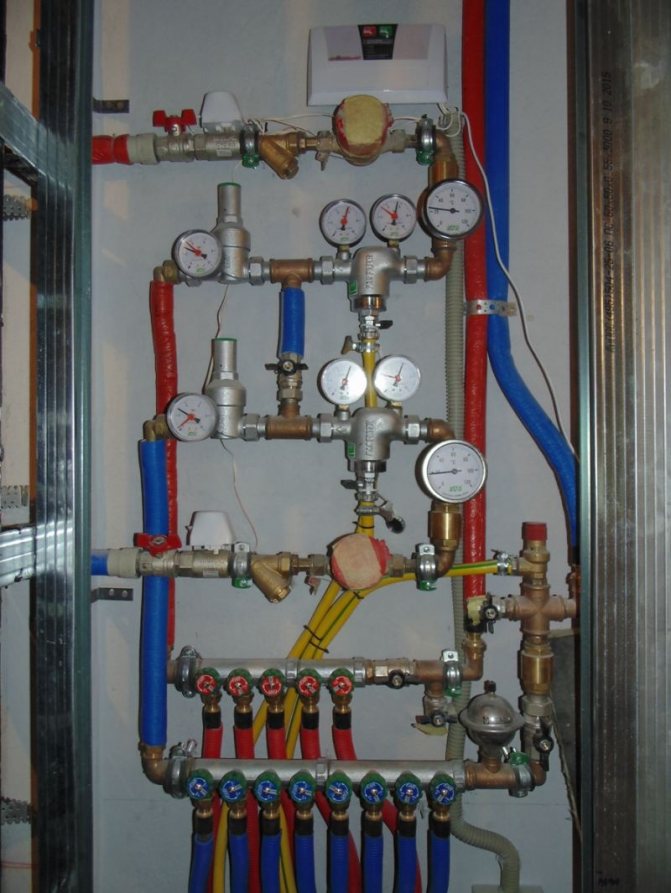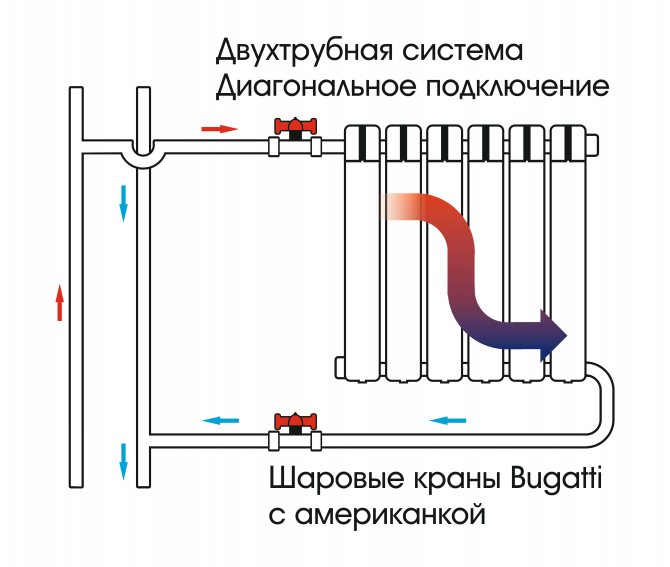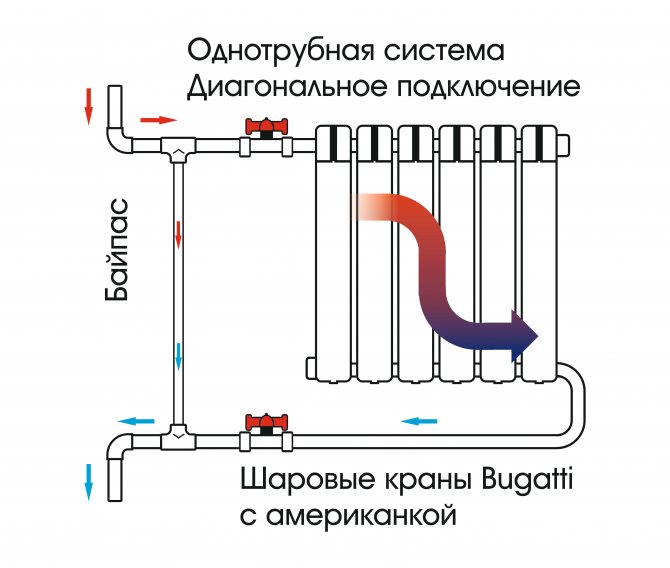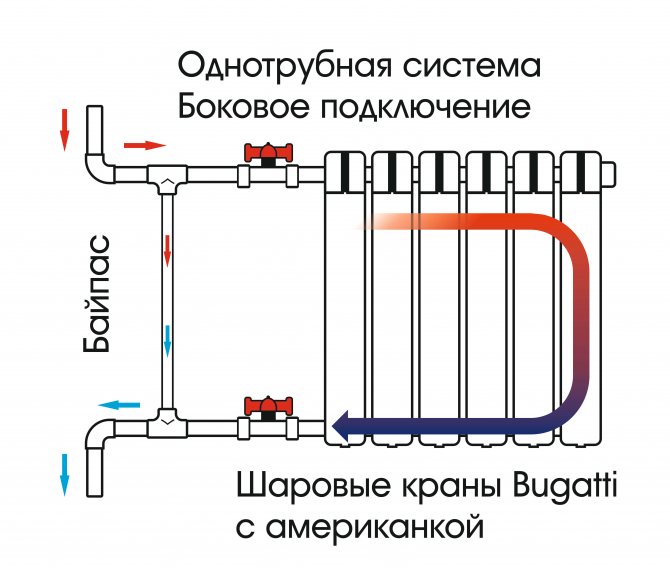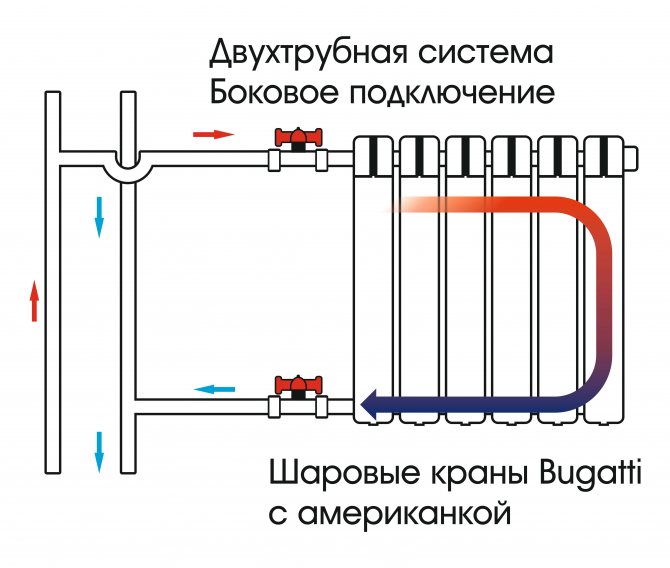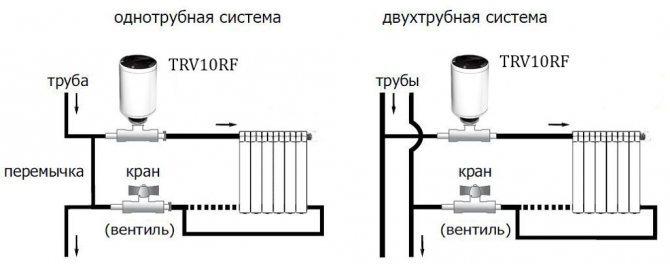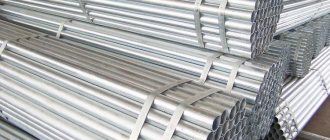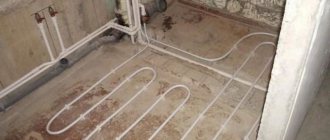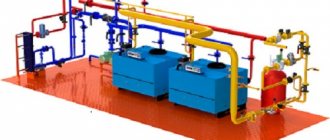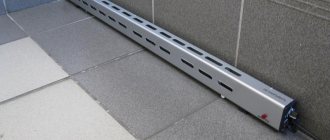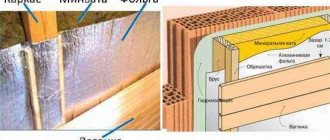Selection of material
If we consider the most popular material, it turns out that more often than reinforced polypropylene and metal-plastic pipes, nothing is used.
What is the reason for this choice?
- Replacing the heating riser in the apartment is done quickly, since there is no need to weld the pipes to one another.
- Pipes made of these materials are easy to bend, so that they can be easily built into any corners and rooms.
- The components are relatively lightweight, so there is no problem of transportation even to the highest floors.
From all sides, the selected materials look almost perfect, but they do not react well to changes in pressure in the pipes. So, if it rises sharply from standard 5 atmospheres to 10, then the pipes may not withstand, which will lead to a small deluge and call a locksmith in an emergency.
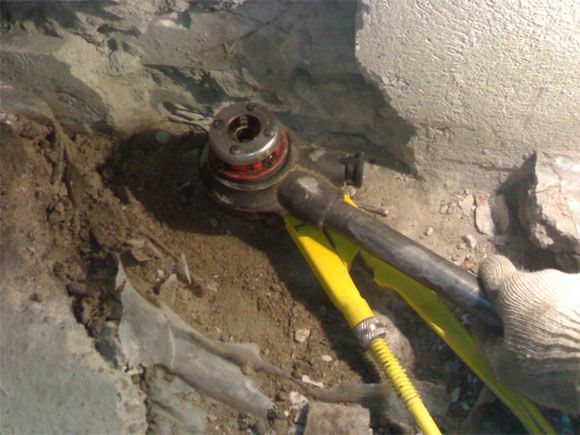
In addition, these materials do not withstand the coldest times of the year, when batteries have to be heated to the maximum. Plastic can begin to crack and leak, so galvanized pipes are the best option.
Installing the appliance
Before installing a new riser, it is necessary to drain the coolant and disconnect the piping, in which case it is better to have good relations with the neighbors. Experience shows that the most vulnerable point of the heating system is the floor where the pipes come into contact with the concrete. If it is not possible to connect the riser from the neighbors' apartment, then you will have to cut it off in your own.
Depending on the material from which it is made, the connection to the system can be made in different ways, but the most reliable and most often used is welding. For a one-pipe circuit, it is imperative that a bypass be installed to connect the inlet and outlet radiator pipes. In order not to create a zone of reduced pressure in the system, the bypass must be one size smaller than the diameter of the riser.
During the installation of the heating system, before the delivery of the house, the interfloor laying of the riser is carried out along special sleeves, which must provide sound insulation. As a rule, the distance between the riser and the sleeve, which at the initial stage was filled with some kind of noise-insulating material, diverges over time and through the heating riser it becomes audible what is happening in the apartment above or below.
To avoid such problems, sound insulation of heating risers in an apartment must be carried out without fail when they are replaced.
It should also be noted that for even distribution of heat throughout all rooms, balancing of the heating risers of an apartment building will be required... For this, a balancing valve is used in older buildings.
It makes no sense to put it on purpose if the distribution of the coolant in a high-rise building is carried out qualitatively due, for example, to a correctly selected pipe diameter.
In any case, it is better to entrust the replacement and inspection of heating risers to specialists, since in the event of an emergency during unauthorized actions, all the hardships, both financial and production, will fall on the offender's shoulders.
Summing up, the following conclusions can be drawn:
- Any work with communication systems owned by the ZhEK or another organizationeven if they are inside the apartment are not acceptable without prior agreement with them. Even simply draining the water without warning the heating network service is considered a violation.Subsequent "flirting" with the workers of these services will not lead to anything good.
- When choosing risers from new materials, you must first check with the technical indicators of the old system and purchase those that are compatible with them.
- It is better to entrust the replacement of heating pipes to professionals., because in the event of an accident during independent work, the client is always wrong.
- Residents don't have to pay to change pipesif they have reached the end of their service life or are in critical condition.
Otherwise, changing the riser is a simple job that, with the proper skill, can be done during the day.
What you need to start working with galvanized materials
The first step is to purchase galvanized pipes DU20 in the required quantity. In addition, a welding machine will be an indispensable element of all work, without which it is impossible to repair risers in an apartment building.
Gas welding can make the job much easier, especially if the installation conditions are difficult. If you have a welding machine, it is worth purchasing long and short threads. Shut-off valves and a radiator will be connected to them.
In addition, you will need:
- three locknuts for the radiator;
- three squeegees, which will go one by one to the jumper and liners;
- two cast iron or brass tees;
- two couplings;
- three valves for pipe DU20.
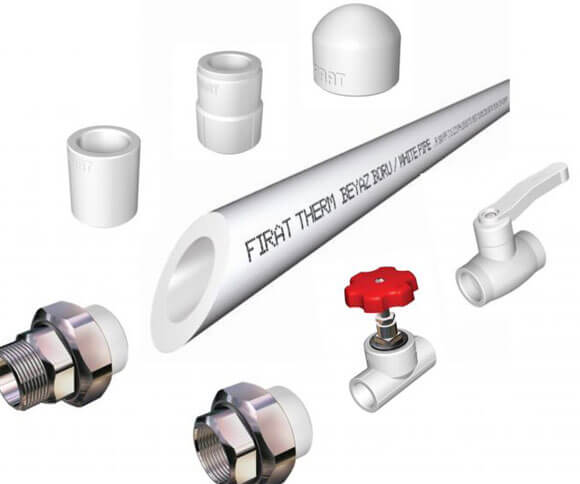

The latter are needed to control the heat in the room, since they can block or limit the flow of water into the battery. In addition, only ball valves should be purchased as they are the most convenient to use.
At whose expense the repairs are carried out
When it comes to replacing heating and water supply pipes in an apartment building, consider some of the nuances:
- If a major overhaul of utilities is assigned in the house, it is carried out by the management company of the house;
- Repair of a failed sewer riser is also carried out at the expense of the management company, since it is a common house property;
- It is the responsibility of public utilities to repair work in a publicly rented apartment, but if the owner is a private person, all costs will fall on his shoulders.
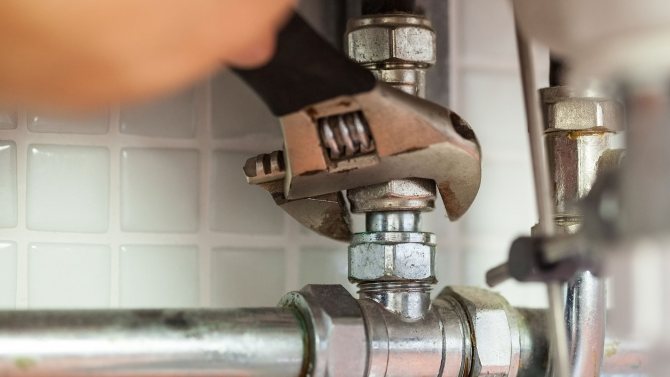

Plumbing repair
So take your time to invest in repairs where others should.
Beginning of work
First of all, the question arises: how to turn off the water flow in the heating riser?
The answer to the question will be the design of bottling water in a residential building, which can be:
- top;
- bottom.
In the first case, you will need to turn off the water, both in the attic and in the basement. When pouring from the bottom, the risers are connected in pairs, so you will have to find a neighboring riser with the desired one. To do this, you will have to go to the apartment from above and see the location of the lintel (read: "Installation of heating pipes in the apartment - the main types of material").
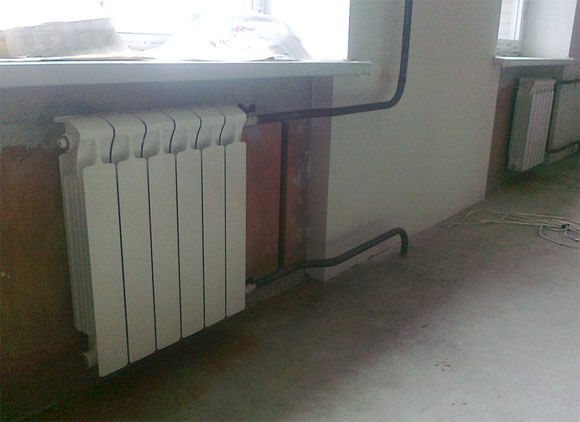

After cutting off the water, you will need to remove the plugs and drain the water. In addition, during the heating season, this operation cannot be performed if it is impossible to enter the apartment on the floor above, since it will be impossible to resume the heating cycle. The reason is simple: air will accumulate in the radiator, which cannot be released without access to the battery.
What is a heating riser
A heating riser is a pipeline that connects the elements of the system and ensures normal circulation of the coolant in heating devices. Risers are available in supply and return. The former dissolve the coolant into radiators, and the latter collect and remove the cooled liquid. In a one-pipe system, a single heat pipe fulfills both functions.
The coolant can move in two directions: from bottom to top and top to bottom. In district heating systems, special expansion joints are installed on the main risers. For an urgent shutdown of the heating system, shut-off valves are installed.
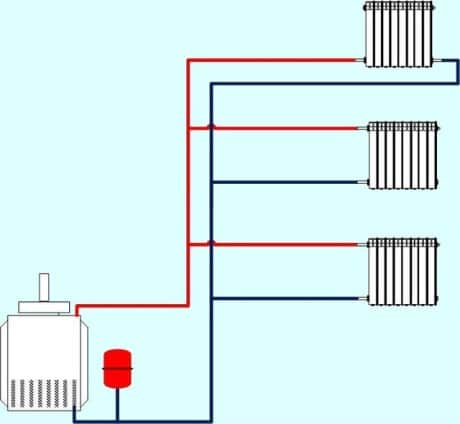

Removing the old riser
The easiest way will be to remove the old riser by cutting their liner with a turbine. After that, unscrew the locknuts and unscrew the rest of the liner from the radiator.
In order to determine the place of cutting the riser, several facts should be taken into account:
- with good relations with neighbors on the floors, you can come to their apartments and remove part of the pipe in the concrete gap, since usually all leaks occur in this area;
- for the convenience of work, it is better to cut the pipe above the floor and below the ceiling, as this will leave more room for maneuver. It also makes it easier to change the tubes later if necessary.
Rules for carrying out work on replacing heating risers


If you plan to change the riser from the valve, then you will not need any permits. In this case, it is allowed to replace the heating risers in the apartment with your own hands. If you have to change the valve itself, then they need permission from the housing office, which is issued on a paid basis.
The most optimal solution when performing these works is a one-time replacement of the heating riser with polypropylene on all floors at once (the entire span). But, in most cases, this wish cannot be realized. For some neighbors, the work is unnecessarily expensive, others have already changed everything in their apartment, while others are quite satisfied with the state that is at the time you start repair work.
According to the existing rules for the performance of work, they should be carried out in the following sequence:
- The system is closed and water is drained from it. The specified work is performed necessarily by a housing department mechanic. If the work is emergency, then the riser will be closed free of charge. In all other cases, you will have to pay a state fee.
- The grinder cuts out the old riser pipes in the apartment. In this case, the technology of subsequent work should be taken into account.
- If the riser changes along the entire span, then the pipes are cut in such a way that it is convenient to remove them from the ceiling;
- The locations for the installation of new heating devices are outlined.
- Radiators are installed in place and leveled. Otherwise, air will accumulate in them.
- After installation, pipes are connected to the radiator, leaving, respectively, to the upper and lower neighbor.
- A jumper is installed to block the area in the event of a leak.
- The riser starts up.
When the neighbors forbade them to do any docking work, then the pipes should be cut in such a way that it is possible to cut threads on the remaining part (at least 6 turns) and install an adapter sleeve.
If the neighbors have a metal riser, and they are allowed to connect from them, then it is better to crash right here, it’s easier to go through the overlap.
If a neighbor has a riser made of plastic pipes, in this case you should also choose plastic pipes of the same diameter and connect to the neighbor through a special coupling. If you are planning a metal riser, then the threaded squeeze will have to be done, fixing the position of the riser in the neighbor's apartment. Otherwise, you can turn his riser and you will have to make repairs with him.
Scheme for replacing risers in a house or apartment
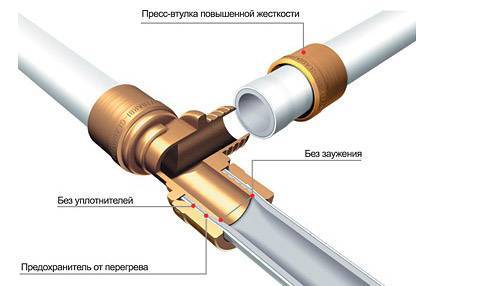

Replacing a cast-iron riser with a plastic one in a private house technically differs from similar work in an apartment only in that in the first case, the possibility of obtaining a heap of approvals and permits disappears. Therefore, we consider this issue on the example of performing work in an apartment.
Correct thread setting
Pipe threading may seem like a routine task to an experienced technician, but the process may be unfamiliar to a novice locksmith.
So what you need to pay close attention to
- With the help of a file or impeller, it is necessary to chamfer the chamfer, after which an entry is made for the die.
- The long-sided die with the holder is pushed onto the tube.This operation is necessary for the perpendicular entry of the die onto the pipe.
- Short threads are applied to the riser, not exceeding five threads. The thread is applied strictly clockwise.
- When the die enters the edge of the tube, it is worth pressing the holder as powerfully as possible with all your might.
- After cutting the first thread, you need to hold the riser with a gas wrench. The maximum force is applied so that it is possible to compensate for the rotational moment of the die, since otherwise it will be possible to strip the threads of the riser one floor above or below.
- If a convector is mounted for welding, then you will not need to hold the structure, since it is impossible to pull out such a riser.
- It is necessary to cut a long thread on the piping to the radiator and on the squeegee in the jumper.
- During the cutting process, the tube section must be fixed with a vice in order not to destroy the structure of the already carved thread.
How to change a heating riser with your own hands
Most often, polypropylene is chosen for modern heating systems. It is affordable, looks good and has good technical and operational characteristics. For the owner of an apartment in a multi-storey building, it is an ideal option - if the neighbor on top has already changed the heating pipes to polypropylene. If not, then you will have to negotiate with him to connect the riser. If no one lives in the apartment, you will not be able to start the heating system after replacing the pipe.
How to turn off the heating riser before replacing
If the coolant rises in the system from below, the risers are connected in pairs. To figure out which neighbor's riser yours is connected to, go up to the next apartment and see how the jumpers are placed. If the supply of the coolant comes from above, then to turn off it will have to shut off two valves - in the attic and in the basement.
To find the right valve, it is important to correctly determine the entrance, after which the location of the desired one will become obvious. After closing the valve, it is necessary to unscrew the plugs, open the dumpers and wait for the water to drain from the system.
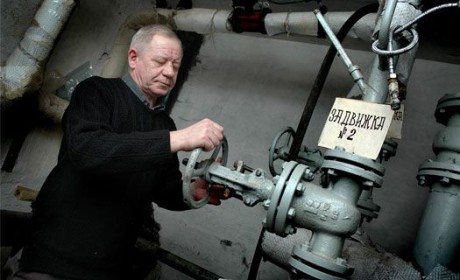

Replacing metal with polypropylene
If the neighbor has already changed the pipes, then there will be no problems at all. Buy pipes of the same diameter. Cut off the old riser, insert a new pipe into the ceiling and connect to the pipe of the neighboring apartment through the transition sleeve. Next, remove the foil layer from the pipe. Unscrew the old pipe from the radiator and put on the tap. A transition sleeve is installed in it and connected to the riser.
Starting the heating riser
Regardless of how many heating risers are in the apartment, the operation to start them is always the same:
- first, the design is tested under pressure;
- then water is started in the batteries and the riser is checked for leaks (in more detail: "Starting heating - we start the system according to the rules").
It is worth finding an assistant to perform the pressure test of the structure. In addition, you can take a photo of all the joints in advance, since the slightest changes will be difficult to notice at first glance, but in comparison with the initial design, it will not be difficult to find flaws (
Preliminary actions
Even before all the necessary equipment, pipes and elements for them are purchased, it is necessary to legalize the change of the riser in the apartment, if it is not planned.
This requires:
- Apply for a change of heating pipes in the housing office long before the start of the heating season (be sure to indicate why replacement is required).
- Further, the statement will "migrate" to the organization of the heating network.
- An employee of the management company is obliged to come and check the validity of the demand for the replacement of the riser. If it is caused by the emergency state of the pipes, then all the costs of dismantling the old system and installing a new one are borne by the organization. In the event that the tenants decide to change the old risers for new ones in order to reduce heat loss (this reason is considered valid), then the owner of the home pays for all the work.
- It is necessary to collect signatures of neighbors who agree to such work, present them to the management company, and only after all permits have been received, proceed to dismantle the old pipes.
If the heating risers in an apartment building are emergency, then there is no need to collect signatures, since such a situation requires urgent intervention and repair.
As a rule, there are no bans on unauthorized replacement of pipes in critical condition. Therefore, if the management drags on with the start of work, then for the sake of protecting the property, you can start dismantling and installing new risers without permits, but only during the non-heating period.
What if the air cannot be displaced?
Unfortunately, a non-standard situation may occur and usually working methods will be powerless. This may be due to the absence of neighbors from above or the unusual design of the house, but you should always be prepared for the fact that the resumption of heat supply to the apartment is not always possible immediately.
Experienced craftsmen use the distillation of the riser for the discharge, since in most cases this allows the circulation to be restored. Manipulations are carried out either over plugs or over valves.
To do this, on one riser, it is necessary to open the valve, and on the second riser - a vent. In this case, the air will leave the battery along with the water. If there is no result, it is worth performing the same actions, but in the opposite direction.
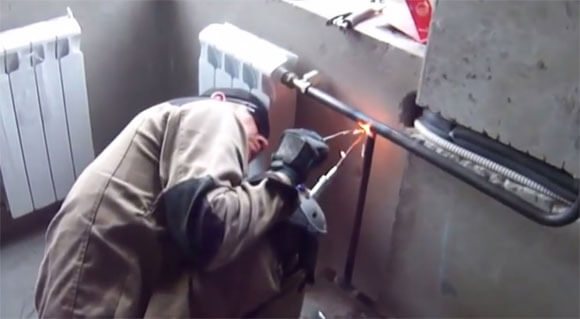

It is worth noting that this technique is especially effective if aluminum or bimetallic radiators are used in the house, since they do not trap air, unlike their cast-iron counterparts, which create traffic jams, so there can be much more problems with them.
Replacing a riser in a house is not an easy task, but it is quite feasible even without special knowledge. It will be very important to use high-quality materials, since otherwise even the hand of the master will not be able to protect the heating system from leaks and heat losses (about
The choice of material for the manufacture of a heating riser
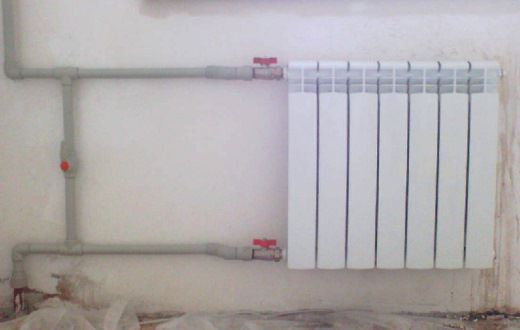

Heating made of polypropylene
In the vast majority of cases, heating pipes in an apartment building are made of steel pipes. After several decades of operation, their condition will be unsatisfactory. If pipes are replaced with new ones in the apartment, you also need to install a riser made of high-quality materials.
However, this can be difficult. The technical characteristics of the new pipe material must meet the requirements. You can learn about them from the technical specifications from the management company, or by consulting their representatives by phone. Most often they are as follows:
- Correspondence of pipes to the temperature regime of heating operation... Those. the new structure must withstand the maximum possible thermal effect without the occurrence of emergency situations;
- System pressure... For centralized heating, it can be from 3 to 6 atm. But it must be remembered that water hammer can periodically occur (when filling the system). Therefore, a margin of 25-30% must be added to the normalized pressure value. That is why it is impossible to install a circulation pump on a heating riser;
- Ensuring proper thermal insulation of the pipe... This should be done only if it passes through a non-residential area where exposure to negative temperatures is possible. For this, thermal insulation of the heating risers is done.
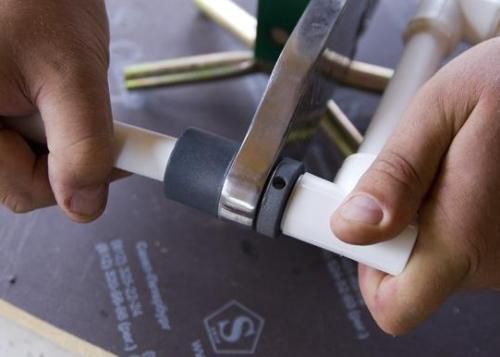

Soldering polypropylene pipes
Several classes of pipe materials meet these requirements. The easiest way is to install the same steel one. But most often, the choice is stopped on polypropylene models.
For arranging a heating riser, it is best to choose a high-strength polypropylene pipe - PN25. It is designed for high maximum pressure ratings.The problem may lie in the temperature mode of the heating operation. If the upper limit exceeds the value of + 90 ° C, the installation of polypropylene is impossible. Then the only option is steel pipes.
In no case should you install metal-plastic lines. Despite the good performance of thermal insulation, heating risers from them will be extremely unreliable. This is due to periodic pressure drops in the system. Gaps most often occur in joint assemblies that are made from clamping fittings.
After turning off the heating riser, before starting it for the first time, it must be pressurized. Only then can the coolant be supplied to the circuit.
What else can be done to improve the heating in the apartment?
If you set yourself the task of how to improve heating in an apartment, then perhaps the listed measures will not be enough for this. In many cases, a good result can be achieved by ordinary window insulation, which reduces heat loss. A heat-reflecting film located on the wall behind the radiator may also be useful. Together with the fact that the heating (pipes and clogged batteries) will be replaced, such measures will ensure the flow of additional heat into the apartment.
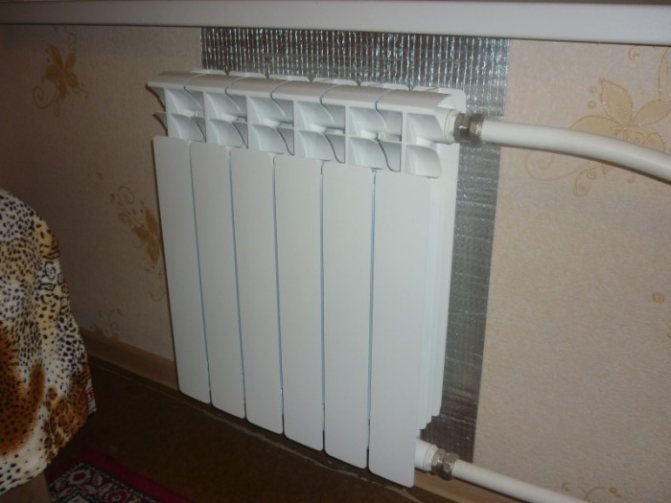

Foil screen behind the heating radiator
In those cases, when you want to have complete independence and not depend on the timing of the start-up of central heating, you should think about how to convert the heating in an apartment to an individual one. This task is far from simple, but if you have a gas water heater installed, then it is quite possible that you will be able to get permission to turn off the central heating and install your own gas boiler.
Of course, this will require significant financial costs and long-term approval, which will not necessarily be completed successfully. But replacing the heating system (central to individual) will allow you to adjust the temperature in the apartment according to your needs, and the ability to turn on the heating at any time you need.
In many cases, especially in old houses, the heating has been in operation for many years, and sometimes the pipes are clogged with salt deposits, and even under the influence of corrosion, they begin to leak. One of the measures to improve heating in an apartment is to replace pipes, risers and radiators.

